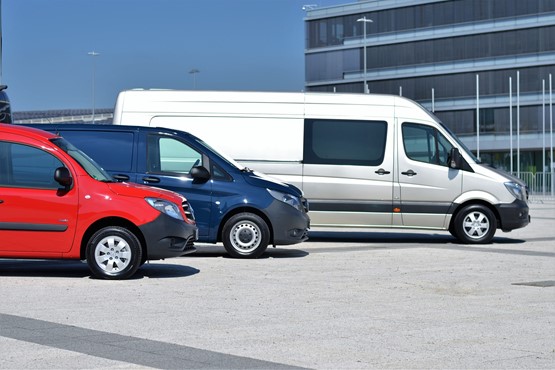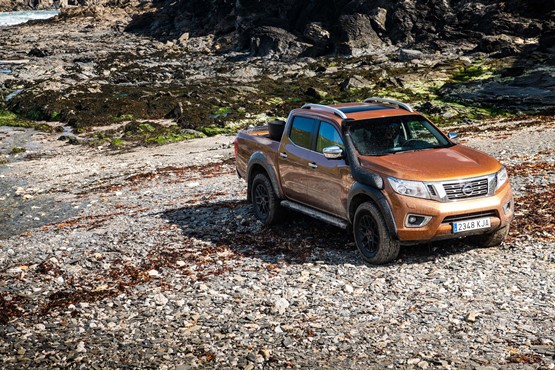Sales of new vans may be down, but that spells good news for sellers of used vehicles. By Dean Bowkett
New van sales continue to remain depressed with July 2018 5.9% down after the 5.8% fall in June.
This puts total light commercial vehicles (LCVs) down 2.7% for the first seven months of the year compared to the same period last year, with little signs of improvement as business confidence remains low.
While recent comments by the European Union’s chief negotiator Michel Barnier and French President Emmanuel Macron might indicate a softening in their stance and taken the risk of a hard Brexit back a notch, the devil is in the detail.
Most business leaders see a trade deal as vital to all the economies of Europe.

However, the risk of a no-deal Brexit remains highly possible as politicians and bureaucrats play a different game.
Aside from pick-ups, which have seen sales rise 2.5% YTD to 30,661, and 4x4s, which are up 240.3% to 1,031 units, all other new van sales have been falling.
July saw medium-sized vans (2.0-2.5 tonnes) fall the most, down 28%, but for the first seventh months of the year, the small LCVs less than two tonnes have seen the biggest decline, dropping 8.8% to 16,257 units.
Small vans are the traditional stalwart for local couriers who are benefiting from the boom in home shopping.
But rather than van buyers keeping away due to fears over any decline in online shopping, the reality is that parts of this army of self-employed couriers are starting to need larger vehicles to meet the growth in demand from the major logistic operators.
This boom in the gig economy and the need for an increasing army of domestic couriers is also good news for the used LCV market.
Demand for small- and medium-sized vans may be seeing the sharpest falls in new van sales, but buyers at this end of the market seem to be switching to used LCVs.
According to Cap hpi demand for small and medium vans remains very strong and sales are now “almost 55% of all (used) LCVs sold at auction”.
With June and July enjoying near record temperatures and unbroken spells of sunshine, many took the opportunity to start their holidays a little earlier which turned out to be the right choice given the much damper and colder August.
The holiday period typically sees the used van market slow down with buyers absent and used volumes fall. But, as anticipated, they brought little more than a brief respite this year as overall demand remained and prices even increased.
Cap hpi reported little let up during the holiday season stating that there was an “absence of lethargy” in buyer attendance or bidding activity. According to the Leeds-based guide, sales volumes remained “almost identical” through July and August but it did acknowledge that sales were slightly down on August 2017.
At the other end of the M1, London-based Glass’s seemed to have a slightly different view.
According to Andy Picton, its chief commercial vehicle editor, sales fell by 1,000 units in July compared with June, equivalent to a 9% fall but he acknowledged that July sales were still 7% higher than July 2017.
The auction house view was similar to Glass’s. Manheim reported footfall through its halls dropping and with sales volumes also falling by 2%. But it seems buyers may have been purchasing from their deckchairs as sales through their online platform represented a record 39% of all sales.
Online sales could go some way to explaining why first-time conversions also increased.
Manheim reported average selling days of just 17.7 days and first-time conversion rates of 80.8% which is a 6% increase over the previous year.
The impact of the hot summer was also noted by BCA COO UK remarketing Stuart Pearson. He reported that the average price fell by 3.2% to £7,221 compared with the previous month and said: “It was not surprising that we saw average values stall in July as the holiday season got into full swing and we experienced the start of the hottest summer since the ’70s.”
Overall, used LCV values remain on an upward trajectory with BCA’s reported £7,221 average for July still 10.1% higher than July 2017. The increase is very much like-for-like with the average age just about one week older and mileage up just 0.7% to 66,329.
BCA also highlighted that the fleet and lease LCV sector recorded the fifth highest value on record in July at £8,131, 13% higher than July 2017 with almost identical ages and mileages.
Manheim also noted stability in the average age and mileage of vans going through its halls at 56.8 months and 71,926 miles.
This makes the sharp jump in overall average values reported by Manheim even more remarkable with July’s average hitting a record £6,436, an 18% increase over July 2017 and 2% up on June 2018.

Matthew Davock, head of LCV at Manheim, said: “July’s record-breaking average selling price performance clearly shows the market remains steady and confident.”
Specification and condition remain key considerations when buying or selling a used LCV. The general rule of ‘the tidier the van, the tidier the sales price’ remains true.
On the environmental front, it seems emissions are not the only consideration and a quick check on the weather forecast could help you secure that extra bid.
According to Picton: “Air conditioning now seems to be a prerequisite if best prices are to be achieved.”
If that is the case, then maybe sellers should be looking to ensure vans due to be remarketed in the summer always have air-con and those due off fleet in the winter have some heated seats and steering wheels.
But specification is something you should take seriously whether you are buying a new van or selling your old one.
Equipment or those decals you deem as necessary may be a hassle for a prospective buyer to remove, while specification you deem unnecessary could be the must-have accessory that gets you a higher resale price.
Back to the subject of emissions and one of the challenges still facing used LCV buyers is the shortage of Euro 6 vans. Shoreham Vehicle Auctions (SVA) commercial vehicle sales manager Tim Spencer reported: “Daily rental suppliers continue to push Euro 5 diesel vans into the used market to ensure their fleets meet the new Ultra Low Emissions Zone (ULEZ) regulations which are set to be introduced in London on April 8, 2019.”
As we move closer to that date, the key message for LCV operators and sellers is to follow the daily rental example and think about where your vans need to operate.
If you are near London and will need to enter the ULEZ or any other of the cities planning to introduce clean air zones (CAZs), think carefully about replacing your pre-Euro 6 vehicles and think about remarketing your older vans in areas unaffected by CAZs.
This may sound simple enough, but impending taxation rules could make picking the right new van more challenging, while ULEZ and CAZ and the lack of consistency from city-to-city makes the used selection equally difficult.
















Login to comment
Comments
No comments have been made yet.